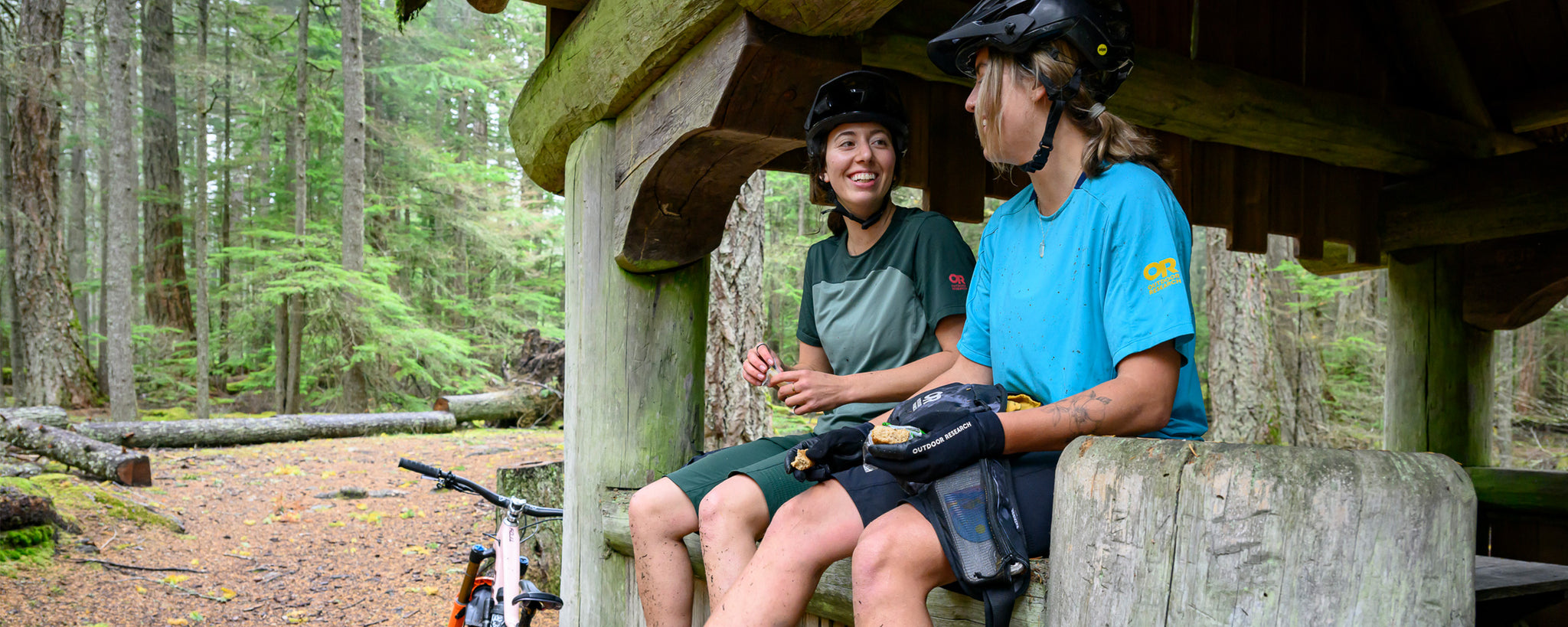In this guide, we'll take you through the essential steps to get ready for your inaugural ride.
1. Select the Right Bike: Before hitting the trails, it's crucial to choose the right mountain bike for your needs. Consider factors such as your riding style, terrain preferences, and budget. Consult with experts at your local bike shop to find the perfect fit and get recommendations on suitable bikes for beginners.
2. Invest in Safety Gear (most importantly the Helmet): Safety should be your top priority when mountain biking. Invest in quality safety gear, including a helmet, gloves, knee and elbow pads, and appropriate footwear. These items will provide essential protection in case of falls or accidents.
Wearing a helmet is non-negotiable for mountain biking. It is the most critical piece of safety equipment and can prevent serious injuries.
Proper Fit: Ensure your helmet fits snugly on your head without being too tight. Adjust the straps and the retention system to achieve a secure and comfortable fit.
Ventilation: Look for a helmet with adequate ventilation to keep your head cool during the ride. This is especially important on warm days or during strenuous climbs.
Certification: Choose a helmet that meets safety standards such as CPSC or EN1078. Certification ensures that the helmet has undergone rigorous testing for impact protection. Try one on at your local bike shop to find the right fit, as the best type of helmet is the one you forget you are wearing.
3. Find the Right Fit in Your Riding Clothes: Wearing the right clothing is crucial for comfort and protection during your mountain bike rides, and ultimately will allow you to stay outside longer.
Moisture-Wicking Fabrics: Opt for moisture-wicking fabrics that draw sweat away from your body, keeping you dry and comfortable. Consider investing in a breathable cycling jersey and shorts designed for mountain biking that are durable and tear resistant.
Weather-Appropriate Layers: Mountain weather can be unpredictable. Dress in layers to accommodate temperature changes. Bring a lightweight jacket or a windbreaker for cooler conditions, and be prepared for sudden rain with a water-resistant outer layer.
Protective Gear: Consider wearing long-sleeved jerseys and pants to protect your skin from scratches and abrasions. Some mountain bikers also choose to wear knee and elbow pads for extra protection.

4. Finding your Perfect Pair of Gloves: Mountain bike gloves provide essential protection and enhance your grip on the handlebars.
Full-Fingered Gloves: Full-fingered gloves offer better protection against cuts, abrasions, and impacts. They also provide a better grip on the handlebars, especially in challenging terrain.
Padded Palms: Look for gloves with padded palms to absorb vibrations and reduce hand fatigue during the ride. This is particularly important for maintaining control on rough trails.
Breathable Material: Choose gloves made from breathable materials to prevent your hands from getting too hot and sweaty. Proper ventilation is essential for comfort during long rides.
5. Learn Basic Bike Maintenance: Familiarize yourself with basic bike maintenance to ensure your ride goes smoothly. Know how to fix a flat tire, lubricate the chain, and make simple adjustments to the brakes and gears. This knowledge will come in handy on the trail.
6. Choose the Right Trail: Start with beginner-friendly trails that match your skill level. Research local trail options and choose one with a manageable difficulty rating. Many trail systems have maps available online, providing information on elevation changes, trail length, and difficulty.
7.Crosstrain: Mountain biking requires strength and endurance, and like most sports the more in-shape you are the more fun you will have. Incorporate cardio and strength training exercises into your fitness routine to build the stamina needed for challenging trails.
8. Practice Basic Riding Skills: Before tackling rugged terrain, practice basic riding skills in a controlled environment. Focus on balance, braking, shifting gears, and navigating obstacles. Find an open space to practice these skills before venturing into the mountains. If you are opting for clipless pedals make sure you have practiced clipping in and out in grasser area first than tackling a technical trail that could require a fast clip-in, clip-out. Or better yet start with flat pedals.
9. Pack Essentials and Nutrition: Pack a small backpack or hip pack with essentials such as water, snacks, a basic first aid kit, a patch-kit, tire levers, pump, and a multi tool, as well as download a map of the trail that can be accessed without cell service. Being prepared will ensure you can handle unexpected situations and enjoy a worry-free ride. Maintaining energy levels during a mountain bike ride is crucial. Proper nutrition ensures you stay fueled and hydrated throughout the ride.
10. Ride with Experienced Friends: If possible, join a group of experienced riders or bring along a friend who is familiar with mountain biking and the trail you are riding. Riding with others will not only enhance the experience but will also provide an extra layer of safety, guidance and encouragement!

11. Check the Weather: Keep an eye on the weather forecast before heading out. Mountain weather can change rapidly, so dress accordingly and be prepared for any unexpected conditions.
12. Enjoy the Experience: Most importantly, embrace the adventure and enjoy the experience. Take in the stunning scenery, challenge yourself, and savor the sense of accomplishment that comes with conquering your first mountain bike ride.
Conclusion: Preparing for your first mountain bike ride involves a combination of selecting the right equipment, honing essential skills, and prioritizing safety. And remember it takes time to feel comfortable so don’t give up! With careful planning and a sense of adventure, you'll be ready to hit the trails and discover the joy of mountain biking. So, gear up, saddle up, and get ready for an unforgettable ride amidst nature's wonders.
>> Get Inspired
